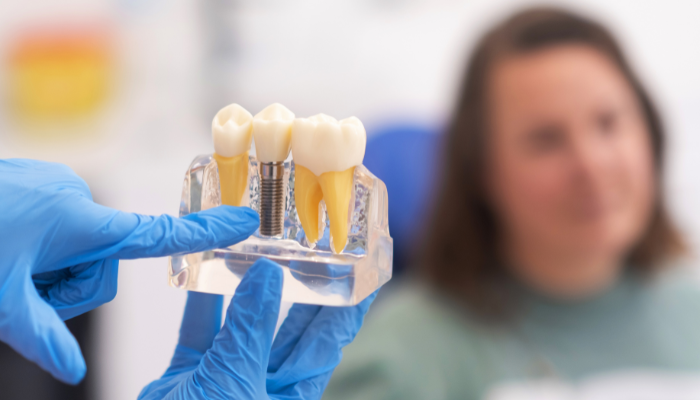Doing a proper sit up engages multiple muscle groups in your body. If you’re struggling to complete even one sit up, there are likely certain muscles that need targeted strengthening. Understanding the muscles involved in a sit up can help you identify and discover “Why Can’t I Do A Single Sit Up?“.
Key Muscles Worked in a Sit Up
Several muscle groups team up to allow you to lift your upper body off the floor during a sit up. Proper form calls for avoiding using momentum or straining your neck.
Abdominals
The rectus abdominis muscles, known more simply as the abs, contract to curl your torso upwards. The external and internal obliques on the sides of your abdomen also engage to rotate, and flex your spine. Developing strong abdominal muscles is crucial for sit up success.
By progressively overloading your obliques, lower abs, and upper abs, they become capable of generating enough tension and shortening to overcome inertia from a supine position. Without strong abs throughout the full movement, lifting off the floor against gravity is impossible.
Weak abdominals often lead to using the hip flexors and straining the neck to finish a sit up using improper form. The deep core stabilizers like the transverse abdominus are also key for stability.
Hip Flexors
Muscles like the iliopsoas connect your spine and legs. They allow you to lift your legs and bend at the waist. Tight hip flexors can limit mobility, while weak hip flexors reduce abdominal work needed for a sit up.
Overactive hip flexors attempt to compensate for weak abs but pull on your lumbar spine. This leads to back pain. Flexibility allows them to relax while abs contract.
Chest and Back
The erector spinae muscles of your lower back contract to stabilize and extend your spine. Pec muscles in your chest resist collapsing forwards. These opposing muscle forces are key for controlled sit up movements.
Strong spinal extension prevents rounding to finish a rep. Likewise, tight chest muscles prevent overarching which compromises lifting power. The ideal coordination engages all these muscle groups.
Why Can’t I Do A Single Sit Up?
If you’re unable to complete a single sit up, there are a few common explanations:
Weak Abdominal Muscles
A lack of abdominal strength, especially in the upper abs closest to your ribcage, can make lifting your shoulders off the ground nearly impossible. Weak external and internal obliques also reduce rotary force generation.
Building abdominal strength requires consistent training with resisted sit ups and other ab moves. If these muscles lack endurance, doing a few proper sit ups may be realistic after additional conditioning.
Many struggle with lift off and getting started from a dead stop on the floor. Partial range sit ups using a bench to start with bent knees can help groove the pattern before straight full range reps. Hand positioning also impacts difficulty.
Tight Hip Flexors
Inflexible hip flexors in your pelvic region frequently cause poor sit up biomechanics. Tightness in these muscles prevents proper posterior pelvic tilt, placing excessive strain on your lower back. This makes lifting your torso difficult and risky.
Stretching hip flexors regularly can allow greater mobility and take pressure off your spine. Warming up before ab exercises and cool down stretches are also wise. Static and dynamic motions both have benefits for flexibility.
Imbalances between hip flexor tightness and weak glutes also contributes to this compensation pattern. Releasing tension while strengthening glutes balances the hips.
Excess Bodyweight
Carrying excess body fat places literal dead weight on your abs during sit ups. This forces your abdominal muscles to work harder against greater resistance while lifting more weight. Just a few extra pounds can mean the difference between repping out sit ups versus not even finishing one.
Trimming body fat through dietary changes and cardio training allows your abs to operate more efficiently. Losing weight gives your abdominals mechanical advantage. Strength gains are better revealed by dropping fat.
Even thin individuals can struggle due to poor mind-muscle connections failing to fully activate the core rather than body composition limitations. But for most, leanness improves sit up capability.
Poor Mind-Muscle Connection
Some people attempting sit ups simply do not properly activate their abdominal muscles. Without mentally targeting the abs and contracting them maximally, completing a sit up relies solely on momentum.
Practicing basic abdominal contractions, hollow holds, and pelvic tilts can teach better mind-muscle connections. Guided slow sit ups while manually feeling your ab muscles will also help train technique. Learning how to isolate the contraction improves recruitment.
The mind-muscle link develops through experience. Combining mental focus, breathing, and monitoring muscle fatigue takes patience but brings quick improvements. Quality repetitions are key.
How Can I Strengthen My Abdominals for Sit Ups?
There are many effective ab strengthening exercises that target the same muscles as a sit up. Progressively overloading these movements helps prepare your abs for the demands of sit ups. Useful options include:
Hanging Leg Raises
By removing upper body support and hanging from a pull up bar, leg raises force your lower abs to apply maximum tension while lifting your legs upwards against gravity. The obliques are also challenged to resist rotating the torso.
Strict form isolates the abs rather than swinging the legs using momentum. Handles, bands, and weight plates provide added resistance for easier variations up to straight body leg raises or windshield wipers hitting the obliques.
Weighted Cable Crunches
Using a cable machine to kneel down and crunch your torso forwards allows you to precisely target the abs with consistent tension via added resistance bands or weights. The external cable load enhances muscle building stimulation.
This exercise complements bodyweight moves by emphasizing the contraction against an accommodating resistance tailored to your current ability to match strength curve needs. Accessory lifts boost primary exercises.
Ab Rollouts
The rollout’s extended range of motion working from a plank position to rolling out a wheel challenges abs through their fullest available range of motion. This avoids partial movement and builds connective tissue strength as well. Complete rollouts are very demanding.
The core must fire intensely to prevent back hyperextension or falling forwards. Progressing gradually develops axial rigidity through the torso over time. Rollouts directly strengthen sit up ability.
Hollow Holds
Isometrically contracting your abs to hold a hollow body position against the floor avoids any momentum like sit ups. Maintaining this posterior pelvic tilt while your legs and shoulders hover overhead creates excellent ab tension.
This gymnastics foundation element teaches proper positioning. Breathing control and muscles staying engaged for longer durations likewise builds endurance critical for sets of sit ups rather than a single rep.
The bottom line is that directly strengthening your abdominal muscles as well as improving flexibility and losing excess body fat facilitates sit up performance gains. An imbalance or weakness in any of these areas can become the limiting factor in executing a proper sit up. A comprehensive program trains all these components in tandem for the fastest improvements. With consistent training and intention to isolate the abs through mind-muscle connections nearly anyone can reap sit up benefits.
Also discover related post – The Best Yoga Poses





